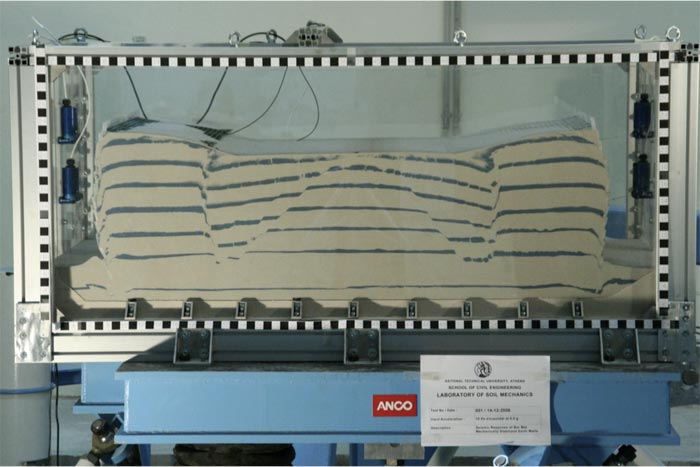XSOILS was a 3-year project comprising 4 consulting firms and 4 university teams. The Project had been funded by the General Secretariat for Research and Technology to improve existing and develop new methods for the seismic design and construction of civil engineering works in “seismically problematic” soils belonging to the X category (X-SOILS) of the Greek seismic code EAK-2000. This soil category involves:
- Saturated, cohesionless soils (sands, silts, fine gravely sands) that are prone to earthquake-induced liquefaction.
- Unsaturated very loose cohesionless soils, fill, very soft clays, organic soils and pre-sheared cohesive soils, which exhibit unstable, difficult to predict, response during seismic loading, undergoing considerable loss of strength (collapse) or permanent displacement accumulation.
- Soils next to the trace of active faults, as well as debris covering steep slopes or other geologically “unstable” formations. Under these conditions, strong seismic ground motions are often followed by step-like permanent differential ground settlements, which are not easily tolerated by the foundation and the load bearing structure of a building.
The primary target was to ensure that all research team members upon the completion of the Project would enhance their competitiveness in the broad field of earthquake engineering design and construction in X-Soil conditions. A secondary target was to eventually eliminate restrictions for building under X-Soil conditions, or at least reduce them to a limited number of rather uncommon situations.
The main body of this Project had been divided into Four (4) main Topics:
- Investigation of 2-D site amplification Phenomena of the seismic ground motion, in the case of alluvial basins and sites with strong topographic relief, such as natural or artificial slopes.
- The experimental (in-situ and laboratory) and the analytical, by means of numerical methods, seismic response and hazard assessment of X-soils.
- The seismic design of surface and deep foundations, as well as flexible retaining structures under large deformation in X-Soil conditions.
- The X-Soil improvement and reinforcement so that the associated seismic hazards are reduced and eventually eliminated.
SGM group members actively participated in all four project topics and have produced 14 Papers in Refereed Journal and National/ International Conference Proceedings.

